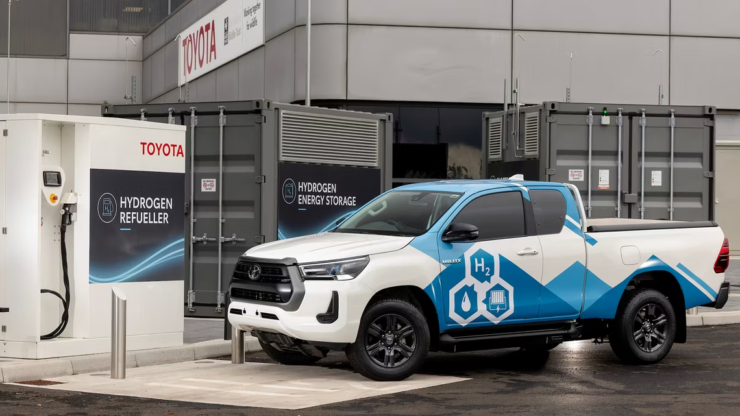Here’s why a hydrogen fuel cell pickup makes so much sense – topspeed.
The automotive industry is heavily skewed towards the development of electric vehicles (EV), while hydrogen technologies in the form of hydrogen combustion engines and fuel cell electric vehicles (FCEV) have been placed on the back burner by most. This has led to a huge disparity in terms of the advances in both technologies, with EVs significantly outpacing FCEVs in both innovation and infrastructure.
However, as you’ll also probably notice, the development of the EV industry has mostly focused on passenger cars and SUVs, not commercial heavy-duty trucks. Sure, there are now a couple of full-size electric trucks out there, but as we’ve seen in an F-150 Lightning that’s been used as intended and is fully loaded, EVs still have a lot of catching up when it comes to the heavy-duty stuff.
This is where I think that hydrogen FCEVs can make their mark and are a better fit when it comes to pickups. While it does come with its own challenges, the potential advantages of a hydrogen FCEV pickup far outweigh its potential hurdles. This is why Toyota UK created an FCEV Hilux to showcase just that.
🔥 What about we co-host a webinar? Let's educate, captivate, and convert the hydrogen economy!
Hydrogen Central is the global go-to online magazine for the hydrogen economy, we can help you host impactful webinars that become a global reference on your topic and are an evergreen source of leads. Click here to request more details
Remember that F-150 Lightning I was referring to a while ago? Well, the AAA tested an F-150 Lightning when loaded with 1,400 pounds of payload–just 110 pounds lower than the pickup’s rated gross weight. When compared to the EPA-rated 300-mile range, the F-150 Lightning did 278 miles without any payload (a 7.3 percent drop compared to the EPA), while the fully-loaded electric pickup only did 210 miles (a 24.5 percent drop compared to the real-world test and 30 percent less compared to the EPA).
Of course, one would argue that a pickup isn’t always fully loaded to the gills, but that’s unless you use your truck mostly as a family and leisure vehicle. For those using a pickup at construction or hauling heavy goods from one province to another, just like in Thailand, then that drop in range will affect your business due to the shorter times that the pickup is doing any work and having more downtimes due to the more frequent use of charging stations.
And it’s not like charging is faster than refueling hydrogen. Even with today’s advances in DC fast charging technology, filling up with hydrogen is way faster and is no different from filling up with fuel. Imagine charging a fleet of pickups for your hauling or utilities business and with the longer time spent on charging, that’s more lost revenue when compared to filling up with hydrogen.
Now, as for that range when fully loaded, there’s currently no pickup truck that’s on sale with hydrogen FCEV technology. Only a prototype exists, which is the aforementioned Hilux FCEV that Toyota UK made. Thankfully, a company called First Hydrogen has provided a fleet of FCEV commercial vans to fleet management company Rivus, which basically proves our point.
Unlike the F-150 Lightning’s nearly 25 percent drop in range, the FCEV commercial vans were not heavily affected by payload and far exceeded the 240 kilometers (150 miles) its electric vans did. This doesn’t take into account a reduction in range of up to 10 percent whenever they loaded up their electric vans.
Highlight:
- Toyota made a hydrogen FCEV prototype of the Hilux, and here’s a set of compelling reasons why an FCEV pickup makes so much semse.
Here’s Why A Hydrogen Fuel Cell Pickup Makes So Much Sense, September 24, 2023








